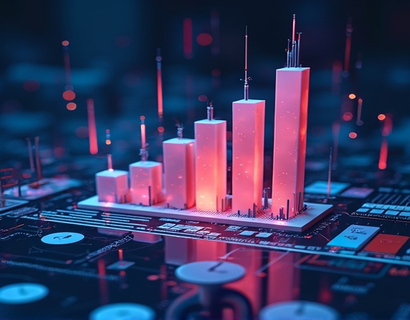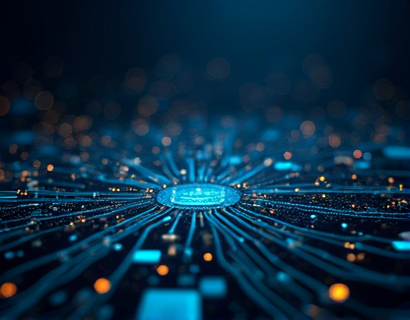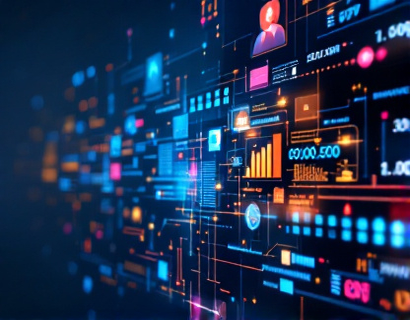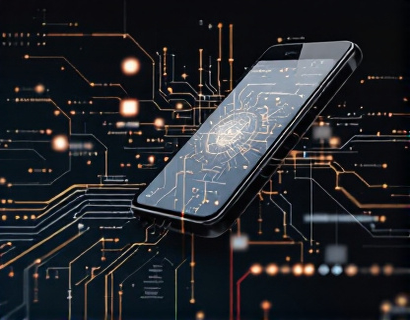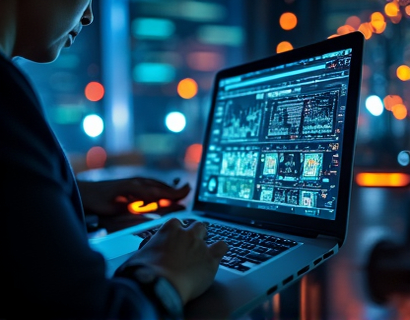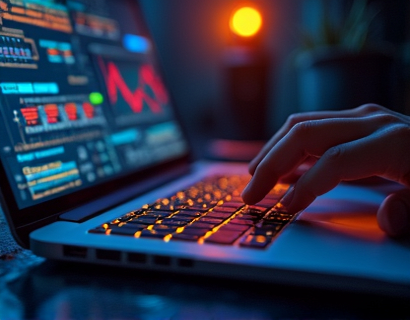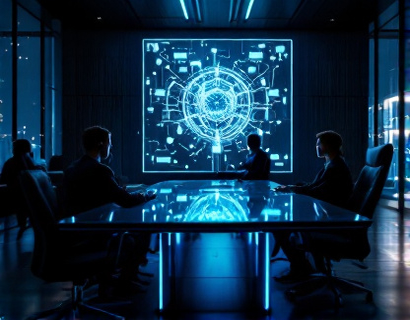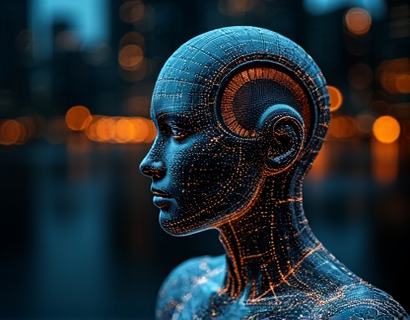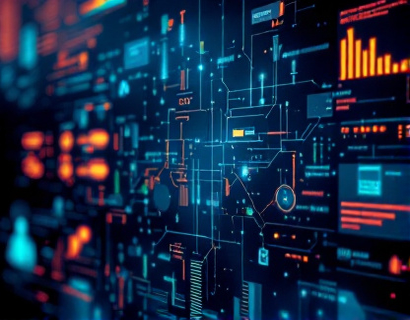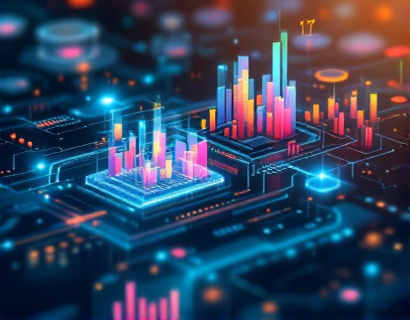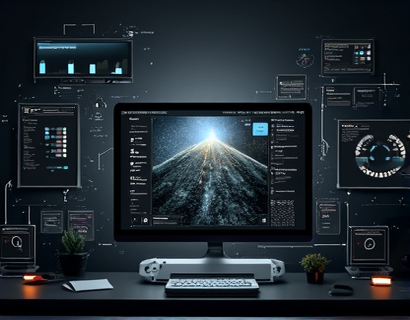Harnessing the Synergy of Crypto and AI: Elevating Productivity with Advanced Digital Solutions
The intersection of cryptocurrency and artificial intelligence (AI) is giving rise to a new era of productivity tools and digital solutions. As tech-savvy professionals and early adopters increasingly recognize the potential of these technologies, the demand for innovative applications that combine their strengths is on the rise. This article delves into how the merging of cryptocurrency and AI is revolutionizing the way we work, offering insights into the latest advancements and their practical applications in the modern workplace.
Understanding the Basics: Cryptocurrency and AI
Before exploring the innovations at the intersection of crypto and AI, it's essential to understand the fundamental concepts of each technology.
Cryptocurrency, a digital or virtual currency, uses cryptography for security and operates on a decentralized network, typically a blockchain. This technology ensures transparency, immutability, and security in transactions, eliminating the need for intermediaries like banks.
Artificial Intelligence, on the other hand, encompasses a range of technologies that enable machines to perform tasks that traditionally required human intelligence. These tasks include learning from data, recognizing patterns, making decisions, and performing actions that typically require human intervention.
The combination of these two technologies creates a powerful synergy, enabling the development of smart, autonomous, and highly efficient digital solutions.
Automating Tasks with Smart Contracts
One of the most significant applications of combining crypto and AI is in the automation of tasks through smart contracts. Smart contracts are self-executing contracts with the terms of the agreement directly written into code. When combined with AI, these contracts can adapt and optimize their execution based on real-time data and predictive analytics.
For instance, in supply chain management, AI-driven smart contracts can automatically trigger payments when specific conditions are met, such as the arrival of goods at a predetermined location. The AI component ensures that the conditions are accurately assessed, reducing the risk of errors and fraud.
This automation not only speeds up processes but also enhances accuracy and reduces the need for manual oversight, leading to significant cost savings and increased productivity.
Enhancing Decision-Making with AI-Powered Predictive Analytics
AI's ability to analyze vast amounts of data and identify patterns makes it an invaluable tool for predictive analytics. When integrated with cryptocurrency, this capability can be harnessed to make more informed financial decisions.
For example, AI algorithms can analyze market trends, historical data, and real-time news feeds to predict cryptocurrency price movements. This information can be used by traders and investors to make more strategic decisions, optimizing their portfolios and minimizing risks.
Moreover, AI can help in identifying emerging trends and opportunities in the crypto space, allowing businesses to stay ahead of the curve and capitalize on new market dynamics.
Streamlining Identity Verification with Decentralized Identifiers
Identity verification is a critical aspect of many digital transactions, and the combination of crypto and AI offers innovative solutions to streamline this process. Decentralized Identifiers (DIDs) are a key component of this solution.
DIDs provide a secure and privacy-preserving way to manage digital identities without relying on centralized authorities. AI can enhance this process by analyzing and verifying identity attributes in real-time, ensuring that only authorized users access specific services or transactions.
This not only enhances security but also improves the user experience by reducing the friction associated with traditional identity verification methods. For businesses, this means faster onboarding processes and reduced compliance costs.
Optimizing Resource Allocation with AI-Driven Marketplaces
AI-driven marketplaces powered by cryptocurrency can optimize resource allocation in various industries. These platforms use AI to match supply and demand more efficiently, ensuring that resources are utilized to their full potential.
For example, in the renewable energy sector, an AI-powered marketplace can dynamically allocate excess energy from solar or wind farms to areas with higher demand. Cryptocurrency transactions ensure secure and transparent payments, while AI ensures optimal resource distribution based on real-time data.
This approach not only enhances efficiency but also promotes sustainability by maximizing the use of renewable energy sources.
Improving Cybersecurity with Blockchain and AI
Cybersecurity is a growing concern in the digital age, and the combination of blockchain and AI offers robust solutions to protect against threats. Blockchain's decentralized and immutable nature, combined with AI's ability to detect and respond to anomalies, creates a powerful defense mechanism.
AI can monitor network activity in real-time, identifying potential security breaches and automating responses to mitigate risks. This proactive approach significantly reduces the likelihood of successful cyber attacks, ensuring the integrity and security of digital transactions.
For businesses, this means a stronger security posture and greater confidence in their digital operations.
Personalizing User Experiences with AI-Enhanced Interfaces
The integration of AI in user interfaces (UIs) powered by cryptocurrency can lead to highly personalized and intuitive user experiences. AI algorithms can analyze user behavior and preferences, tailoring the UI to meet individual needs.
In the context of crypto, this can enhance the usability of digital wallets and trading platforms. For instance, an AI-driven wallet can suggest optimal investment strategies based on a user's risk profile and market conditions, all while ensuring secure and private transactions through cryptocurrency.
This level of personalization not only improves user satisfaction but also increases engagement and loyalty.
Challenges and Considerations
While the potential benefits of combining crypto and AI are substantial, there are several challenges and considerations to keep in mind.
First, the regulatory landscape for cryptocurrency is still evolving, and the integration of AI adds another layer of complexity. Ensuring compliance with local and international regulations is crucial to avoid legal issues.
Second, the technical expertise required to develop and maintain these advanced systems can be a barrier for some organizations. Collaborating with experts in both crypto and AI can help overcome this challenge.
Finally, the ethical implications of AI, such as bias and privacy concerns, must be addressed to build trust and ensure responsible use of these technologies.
Conclusion
The convergence of cryptocurrency and AI is paving the way for a new generation of productivity tools and digital solutions. By automating tasks, enhancing decision-making, streamlining identity verification, optimizing resource allocation, improving cybersecurity, and personalizing user experiences, these technologies are transforming the modern workplace.
As the field continues to evolve, staying informed about the latest innovations and best practices will be essential for businesses and individuals looking to harness the full potential of this synergy. The future of productivity is here, and it is powered by the combination of cryptocurrency and AI.








